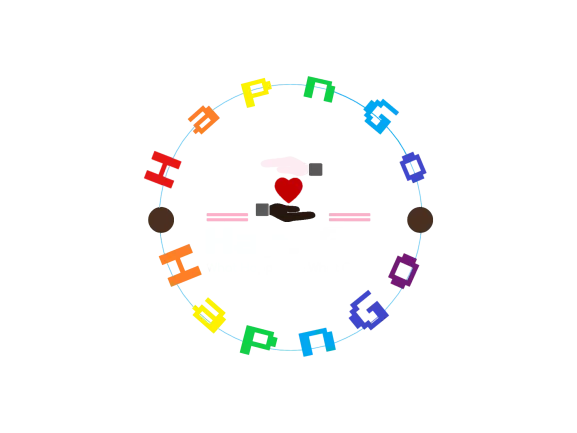This post contains affiliate links. As an affiliate associate, I earn from qualifying purchases. Learn more
Blogging has become an influential and satisfying avenue for sharing your ideas, opinions, and passions with a global audience. Whether you’re considering starting a blog as a casual pastime, a supplementary income source, or envisioning it as your primary vocation, blogging offers a platform for self-expression, building connections, and generating income online.
While the term “blog” was not coined until the late 1990s, the history of blogging starts with several digital precursors to it. Before “blogging” became popular, digital communities took many forms, including Usenet, commercial online services such as GEnie, BiX and the early CompuServe, e-mail lists and Bulletin Board Systems (BBS).The modern blog evolved from the online diary, where people would keep a running account of their personal lives. Most such writers called themselves diarists, journalists, or journalers. A few called themselves “escribitionists”.
History of blogging, Wikipedia
- But what does it take to initiate a blog in 2024?
- What are the crucial steps for developing a profitable blog that captivates and retains your intended audience?
In this comprehensive guide, we’ll walk you through the process of starting a blog from the ground up, employing the finest tools and strategies available in the current digital landscape.
Our discussion will span topics such as selecting a niche, choosing an appropriate platform, registering a domain name, deciding on a design, crafting your inaugural posts, strategizing your content calendar, promoting your blog, and exploring avenues for monetization.
By the conclusion of this guide, you’ll possess a detailed plan for launching your successful blog in 2024.
What Happens & What Goes
YOU MAY ALSO WANT TO READ: 1st Step: Find a Memorable Domain Name (Website Creation)
by Leonard
Table of Contents
Step nr. 1: Why Start a Blog?/ Define Your Focus

Before diving into the blogging world, it’s crucial to pinpoint why you’re embarking on this journey.
- What drives you to blog, and what outcomes do you envision?
The spectrum of blogging advantages spans both personal growth and professional achievements. However, clarity on your vision and how you intend to serve your audience is paramount.
What Happens & What Goes
Common inspirations behind initiating a blog include:
- Self-expression and creativity: Blogging opens a channel to voice your unique story to the globe. It serves as a vibrant canvas to document your path, display your proficiency, and vocalize your viewpoints.
- Knowledge sharing and expertise: Through blogging, you can evolve into a beacon of knowledge, enriching your readers’ lives while fostering your own learning and skill enhancement as you delve into intriguing subjects.
- Community building: The blogosphere enables you to forge connections with individuals who resonate with your passions and aspirations. By cultivating these relationships and participating in niche communities, a synergistic exchange of ideas and support flourishes.
- Thought leadership and influence: Establishing your blog positions you as a trusted authority in your domain, amplifying your influence over your audience’s viewpoints and decisions with your insights and counsel.
- Personal branding and professional growth: A blog is a potent tool for sculpting your brand and spotlighting your talents and achievements. It acts as a dynamic platform for professional opportunities, networking, and collaboration.
With a solid grasp of your blogging aspirations, the next step is refining your focus. Opting for a niche involves selecting a topic that resonates with your interests or expertise.

A wisely chosen niche should:
- Suit your passions or skills: Blogging on familiar subjects simplifies content creation and enhances the authenticity and quality of your output, making the endeavor more enjoyable and engaging.
- Meet a demand or a need: Identifying unmet needs within your target market ensures your blog’s relevance and indispensability to your audience.
- Have potential for growth and monetization: Opting for a niche with a vast and active audience, along with diverse revenue opportunities, paves the way for your blog’s expansion and financial success.
Selecting your niche is merely the first stride toward cultivating a flourishing blog. This fundamental decision paves the way for defining your audience, devising a content strategy, and setting you apart from the competition, all while keeping you driven and consistent on your blogging voyage.
What Happens & What Goes
Step nr. 2: Select a Platform and Find Your Home/ Craft Your Blog’s Design
After setting your blog’s focus, it’s time to choose a platform—your blog’s digital residence. This decision involves selecting a blog software or service that will host your site and enable you to publish and organize your posts.
With a plethora of choices available, it’s crucial to find one that aligns with your requirements, considering factors like user-friendliness, customization options, functionalities, security features, and pricing.
Here are some widely praised blogging platforms:
- WordPress: Dominating the blogosphere, WordPress offers immense power and flexibility. It comes in two flavors: WordPress.com, a fully-hosted service perfect for beginners, allowing free and paid options; and WordPress.org, a self-hosted version giving you full control over your site, though it demands a bit of technical know-how for maintaining your server and domain. With endless themes and plugins, WordPress caters to all, albeit with a learning curve for the self-hosted option.
- Hostinger Website Builder: Hostinger’s website builder is user-friendly, allowing you to create a blog with minimal technical knowledge. It offers a drag-and-drop interface, making it accessible for beginners. It provides a variety of templates that you can customize to match your blog’s style. While it may not have as many options as some other platforms, it strikes a good balance between simplicity and flexibility. Also, Hostinger’s website builder is affordable, especially if you’re looking for budget-friendly options. It offers free plans and low-cost premium plans, domain registration, and hosting services, streamlining the process for users.
- Squarespace: Known for its stunning, professional templates, Squarespace makes blog creation a breeze with its all-in-one platform that includes hosting, domain registration, security, and analytics. Offering a 14-day free trial and various subscription plans, Squarespace caters to those seeking a refined aesthetic. However, it might be restrictive in terms of customization and flexibility, with pricing considerations.
YOU MAY ALSO WANT TO READ: Hostinger Review: The Most Efficient Web Hosting for Experts and Beginners 2024
by Leonard

After choosing a platform, the subsequent phase involves designing your blog. A thoughtful design not only elevates your blog’s visual appeal but also improves usability, impacting first impressions, engagement, and visitor retention.
Focus on design elements such as color schemes, font choice, imagery, navigation, and device responsiveness to craft an inviting and intuitive blog.
What Happens & What Goes
Effective design tips include:
- Color Scheme: Opt for a consistent palette that suits your niche and brand. Select harmonious, contrasting, and complementary colors, avoiding overly vibrant shades that might distract or deter your audience.
- Fonts: Choose legible fonts that align with your content’s tone. Prioritize simplicity and readability, steering clear of overly elaborate typefaces that may hinder your blog’s readability.
- Images: Incorporate relevant, high-quality visuals that bolster your posts. Ensure images support your narrative, captivate attention, and adhere to copyright laws without compromising your site’s loading speed.
- Navigation: Implement a straightforward and intuitive site structure to assist visitors in exploring your blog easily. Incorporate a menu, search functionality, sidebar, and footer to enhance accessibility, avoiding complex layouts that can confuse readers.
- Responsive Design: Ensure your blog is accessible across a variety of devices and screen sizes, maintaining a consistent look and functionality on desktops, laptops, tablets, and smartphones, and avoid designs that are not adaptable to different browsers or devices.
Designing your blog is a crucial step in making it stand out and draw in your target audience. Utilize strategic design elements to create a cohesive and navigable interface that fortifies your blog’s identity and appeal.
What Happens & What Goes
Step nr. 3: Write Your First Posts/ Plan Your Content
With your platform chosen and your blog’s design in place, it’s now time to write your initial posts and devise a content plan. This involves crafting content that is both appealing and engaging, aimed at defining your blog’s identity and drawing in your target audience.
Furthermore, developing a content strategy is crucial. It will simplify your content creation efforts and ensure a continuous stream of topic ideas.

A few pivotal tips for writing your debut blog posts and organizing your content strategy include:
- Write Your First Posts: Create Compelling Posts That Set the Tone
- Identify a topic that resonates with your niche, meets your audience’s needs, and aligns with your objectives. Keyword research tools, competitor analysis, social media insights, and your own experience are valuable resources for pinpointing relevant and trending blog topics.
- Craft an eye-catching headline that captures your audience’s interest and communicates the core benefit of your post. Utilize formulaic headlines, impactful words, numbers, and questions to make your headline more engaging and encourage clicks.
- Begin with an engaging introduction to captivate your readers and compel them to continue reading. Employ storytelling, statistics, quotes, intriguing questions, or highlight a problem to pique interest and curiosity.
- Ensure the body of your post is concise and delivers on the promises made in your headline and introduction. Use subheadings, bullet points, images, and examples to section your text, enhancing readability and comprehension.
- Conclude with a strong summary of your main arguments and a clear call to action, encouraging readers to comment, share, subscribe, or perform any desired action post-reading.
- Plan Your Content: Streamline Your Content Creation Process
- Develop a content calendar to map out your future posts over the coming weeks or months. Whether through a spreadsheet, software tool, or a basic template, organizing your content ideas, keywords, headlines, publishing dates, and other elements is made easier.
- Create detailed content outlines to provide structure to your posts and guide your writing journey. Templates or tools can help sketch out the essential components of your blog post, including the headline, introduction, subheadings, main content, conclusion, and calls to action.
- Establish a content workflow to detail the steps involved and assign roles in the content creation process. Tools or checklists can assist in managing tasks such as research, writing, editing, proofreading, formatting, publishing, and promotion.
Embarking on the journey of writing your initial blog posts and formulating a content plan is vital for your blog’s launch and subsequent success. Implement these suggestions to construct engaging posts that define your blog’s character and organize your content, ensuring a smooth creation process.
What Happens & What Goes
Step nr. 4: Promote and Build Your Community/ Consistency is Key

Congratulations on launching your blog and creating some fantastic content!
The next challenge is attracting people to your blog and turning them into dedicated fans. This is where the art of promotion and the science of community building become essential. It’s about actively marketing your blog, connecting with your audience, and forging meaningful relationships.
When analyzing these 153 monthly blog income reports, we see that bloggers make money from display ads, affiliate marketing, digital products, services, and sponsored content. Regardless of what stage your blog is in, strategizing your monetization method is something you cannot ignore. While some bloggers cash in millions annually, others barely scrape by.
The Ultimate List of 153 Blog Income Reports: Case Studies And Strategies Reveled by
Gael Breton
Moreover, it’s crucial to maintain a consistent, high-quality content output. Continuously honing your skills and keeping pace with evolving trends and audience needs are part of this journey.
In this step, we’ll guide you through promoting your blog, building a robust community around it, and maintaining consistency in your efforts.
What Happens & What Goes
Here are some proven strategies and tips for promoting your blog and nurturing your community:
- Promote and Build Your Community: Amplify Your Blog’s Reach and Influence
- Leverage social media to distribute your content, engage with followers, and expand your audience. Select platforms that align with your niche and objectives, and craft a social media strategy that complements your content calendar. Enhance your posts with hashtags, images, videos, and stories to boost engagement and visibility.
- Implement email marketing to keep in touch with your subscribers, nurture leads, and boost conversions. Build an email list, provide a compelling lead magnet, and send targeted valuable emails. Use engaging subject lines, personalize your messages, and incorporate calls to action to increase effectiveness.
- Optimize your blog for search engines with SEO practices to increase organic traffic and improve keyword rankings. Conduct keyword research, employ on-page and off-page SEO tactics, and track your performance through analytics. Utilize SEO tools and plugins for assistance with optimization tasks and audits.
- Engage in guest posting to showcase your expertise, access new audiences, and earn backlinks. Identify reputable blogs within your niche, submit your ideas, and contribute guest posts that offer value and include links to your blog. Adhere to guest posting standards and interact with the readers by responding to comments.
- Network and collaborate with fellow bloggers, influencers, and industry experts. Participate in online communities and forums, comment on blogs, join events and webinars, and connect with potential collaborators. Provide support and valuable insights, and explore opportunities for joint projects or promotional events.
- Consistency is Key: Keep Going!
- Set clear, realistic goals for your blog and monitor your progress. Apply the SMART criteria (Specific, Measurable, Achievable, Relevant, and Time-bound) for goal-setting, and use tools to track your achievement. Celebrate your successes and learn from any setbacks.
- Maintain a regular content creation and promotion schedule. Organize your tasks with a content calendar and workflow, and use deadlines and reminders to stay on track. Ensure consistency in quality, tone, and publishing frequency to meet your audience’s expectations.
- Commit to ongoing learning and skill enhancement. Keep up with the latest trends and practices in your niche and the broader blogging world. Consume a diverse range of educational content, including blogs, books, and multimedia resources, and participate in relevant courses and workshops to refine your abilities.
- Be open to experimentation on your blog. Test various formats, styles, topics, and engagement strategies to identify what resonates with your audience. Use the feedback and data gathered to fine-tune your approach, embracing both successes and failures as learning opportunities.
According to a recent study by Orbit Media, 80% of bloggers report that blogging drives results. The bloggers who publish two to six times per week are 50% more likely to report strong results. Bloggers who use 7+ images per post are 2.3X more likely to report strong results.
2023 Blogging Statistics: 10 years of Trends and Insights from 1000+ Bloggers By Andy Crestodina
YOU MAY ALSO WANT TO READ: Rank Math SEO Plug-in: Learn SEO From The Best WordPress Tool 2024
by Leonard

Effectively promoting your blog, cultivating a community, and maintaining consistency are pivotal for blogging success. Implement these strategies to enhance your blog’s influence and continue growing as a blogger.
What Happens & What Goes
Conclusion
Congratulations on taking the first steps toward launching your blog in 2024!
Utilizing the most up-to-date tools and practices, you’ve embarked on a journey through four critical stages to develop a prosperous blog that captures and retains your target audience:
- Step 1: Establishing Your Blog’s Purpose/ Sharpening Your Focus
- Step 2: Choosing a Hosting Platform/ Designing Your Blog
- Step 3: Crafting Your Initial Posts/ Strategizing Your Content
- Step 4: Engaging and Expanding Your Audience/ Maintaining Consistency
Through these phases, you’ve laid down a robust foundation for your blogging venture. Furthermore, you’ve acquired various insights and strategies to enhance your blog’s appeal and growth. Bear in mind, that the journey of blogging is ongoing.
It demands persistent diligence, learning, and refinement. Therefore, don’t halt your progress now. Persist in blogging, creating, and achieving your objectives.
The moment has come for you to take the plunge and initiate your blogging venture.
With all the tools for success at your disposal, embark on your journey today. Should you require assistance or guidance, do not hesitate to reach out to us. We’re dedicated to supporting you and aiding you in realizing your blogging aspirations.
What Happens & What Goes
Frequently Asked Questions
A1: Blogging is the process of creating and publishing content on a website, focusing on particular topics or niches. It is an avenue for both personal and professional expression, characterized by an informal tone, frequent updates, and direct engagement with readers.
A2: Yes, bloggers can earn income through various channels such as display advertisements, affiliate marketing, sponsored content, offering online courses, selling products, and providing services. The profitability of a blog depends on its niche, the amount of traffic it receives, the level of audience engagement, and the effectiveness of its monetization strategies.
A3: Starting a blog involves several steps: First, select a blogging platform that fits your requirements and a hosting service to get your blog online. Identify a niche that interests you and choose a blog name and domain relevant to your chosen topic. Following this, design your blog with a pre-made template or a custom design, come up with engaging topics for your audience, and write and publish your initial blog post. Finally, develop an editorial calendar to streamline the publication of future posts.
A4: While blogging remains popular, it now shares the spotlight with other content formats that offer more interactivity, engagement, and variety. Alternatives like vlogs, podcasts, newsletters, social media influencing, and interactive infographics have become increasingly favored for their dynamism and ability to captivate audiences in diverse ways.
Feel free to get in touch for any concern you may have!
Let’s create a better world together!
Author Profile

-
Hi, I’m Leonard, the founder of HapnGo "What Happens & What Goes". I am a visionary entrepreneur with multilingual fluency. I have a degree in accounting and marketing with proficient digital technology competencies. I am passionate about creating compelling content that resonates with diverse audiences.
My mission is to provide value to you and the rest of the world.
Let's create a better world together!
Leonard
Latest entries
 6th Step: Launch And OngoingJune 7, 2024Rank Math’s Youtube Channel: Your Best Guide to SEO Succes in 2024 | HapnGo
6th Step: Launch And OngoingJune 7, 2024Rank Math’s Youtube Channel: Your Best Guide to SEO Succes in 2024 | HapnGo Define Your FocusJune 7, 2024Define Your Focus: 1st Step for a Successful Blog in 2024 | HapnGo
Define Your FocusJune 7, 2024Define Your Focus: 1st Step for a Successful Blog in 2024 | HapnGo BloggingMay 26, 2024Blogging Essentials: Create Your Profitable Blog in 4 Steps in 2024 | HapnGo
BloggingMay 26, 2024Blogging Essentials: Create Your Profitable Blog in 4 Steps in 2024 | HapnGo 6th Step: Launch And OngoingMay 23, 2024WordPress Security: Ultimate Plug-in to Safeguarding Your Site in 2024 | HapnGo
6th Step: Launch And OngoingMay 23, 2024WordPress Security: Ultimate Plug-in to Safeguarding Your Site in 2024 | HapnGo





